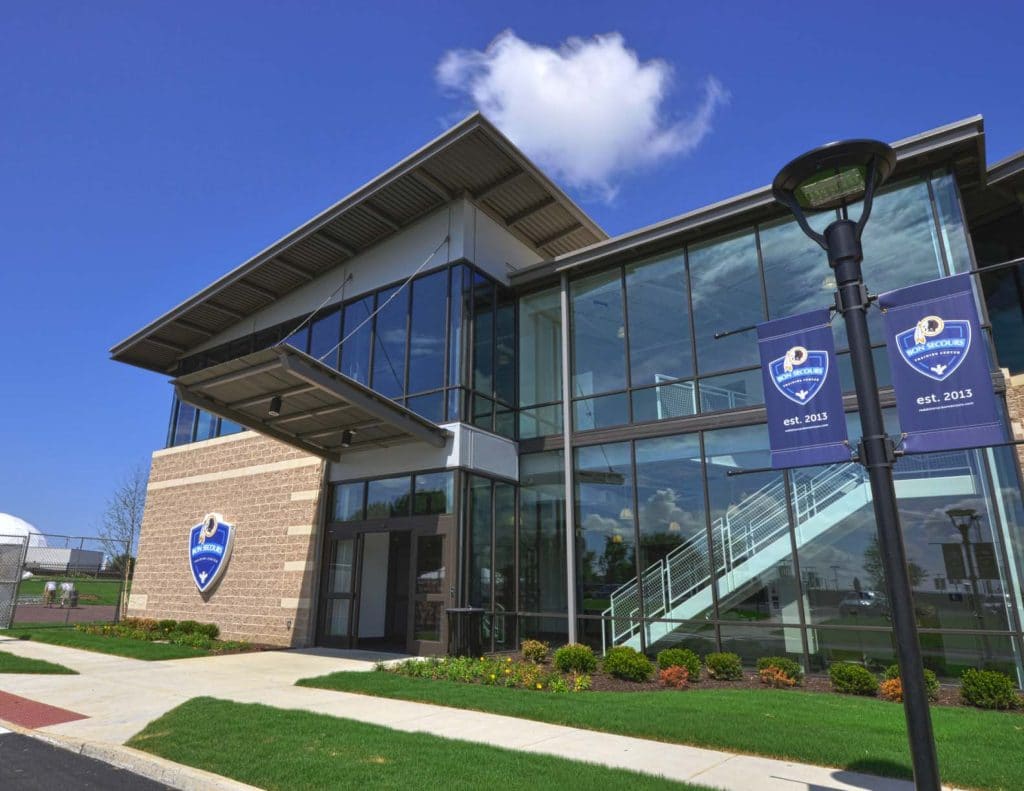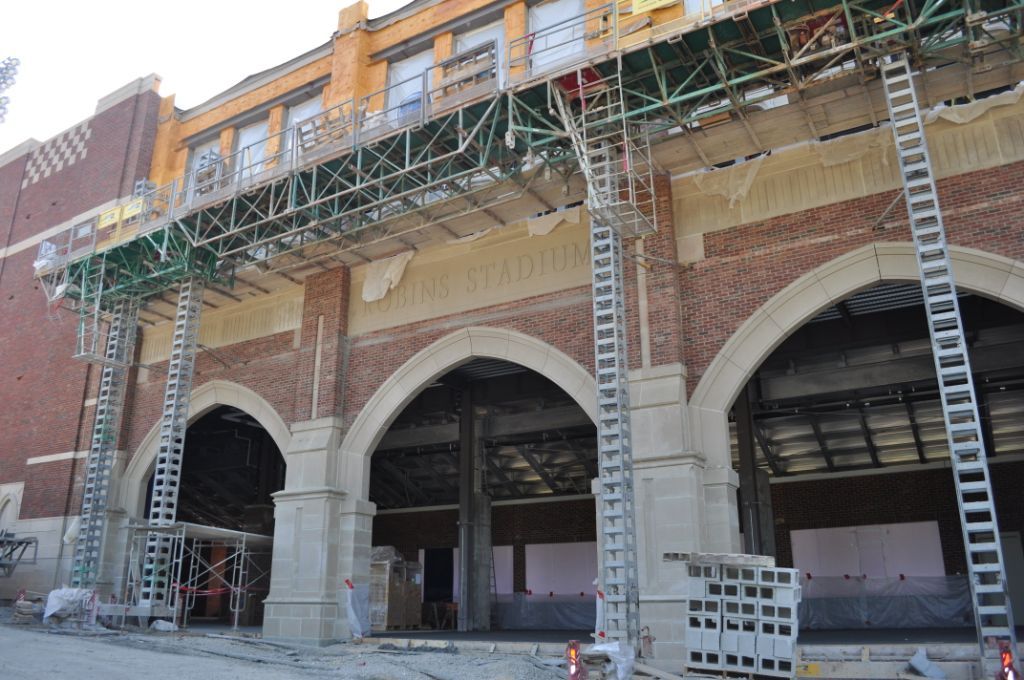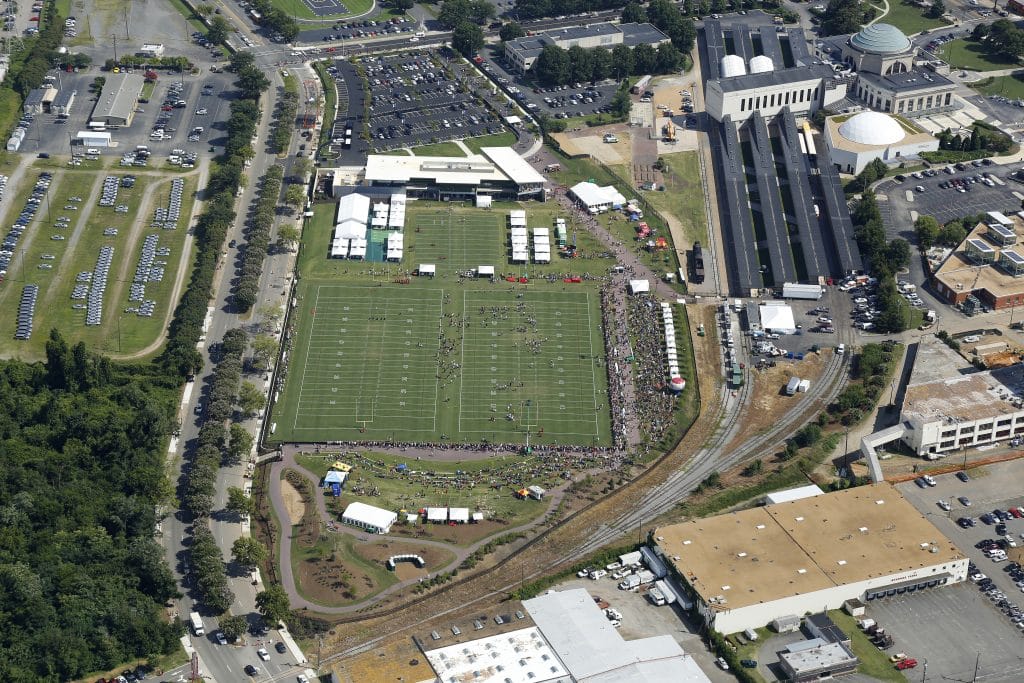For many of us, at Hourigan, the pride and enthusiasm we feel for our alma maters had its beginnings in the stands. The heartbeat of campus (or a city) centers around purpose-built sporting and recreational facilities. We take pride in making sure these buildings are highly functional facilities for athletes, entertainers, and fans alike. We believe that when we work in collaboration with clients, owners, and local jurisdictions to consider all the ways sports facilities can positively impact our communities, it is a win-win for all.
Nearly all large-scale construction projects present unique challenges, but the construction of a sports facility requires a game-changing approach by the construction manager to meet deadlines, communicate with stakeholders, mobilize on the jobsite, and work efficiently as a team.

While weather and site conditions may fluctuate, one thing that does not is opening day. Organized sports are dictated by strict seasonal schedules. Baseball is played between March and September; football is played between August and May and soccer is played from August to December. The start of a sports season can’t be moved, so it’s critical to align the schedule and budget to ensure there aren’t any setbacks.
Timing your construction project, such that it doesn’t conflict with the sports season requires a long runway. Having a contractor with experience in building sports facilities and a reputation for meeting deadlines on time and on budget will benefit the overall project goals.

Owners of sports facilities have a vested interest in the construction of their facilities. Passion and enthusiasm for their team and the project have them engaged from the get-go. Committees, and oftentimes larger communities, are also excited and have a stake in the success of the project. This added pressure on the owner intuitively makes them more involved in the process to ensure it is delivered successfully and on time.
In most situations, the playing field is already a stationary piece of the project. A challenge is presented when owners want to keep the existing field open for sports practices and/or matches during construction of the new facility. Construction managers must be experts at managing stakeholder expectations to ensure a smooth process. Building a thorough and detailed plan of attack, trusted working relationships, and championing communication facilitates a positive experience and successful delivery.

Sports facilities are not typically built in a large open space but are located in the middle of a busy city, campus, or are surrounded by other attractions. Tight jobsites can make it difficult for equipment and machinery to gain access to the working area. Since these areas are so tight, extra space for parking, spectators, and seating arrangements for visibility all must be thoroughly considered before construction begins.
Renovations or additions to operational facilities necessitate additional layers of planning. Spectators are coming to the facility to watch their favorite teams play! Ticket holders want convenient access to parking lots and the facility. Hassles related to parking access facility entrances may deter patrons from returning.
Pedestrian traffic, including the planning of ADA-compliant sidewalks and pathways is also something to consider. For larger sports facilities, tons of people will be walking to and from the arena and there should be plenty of room for individuals to walk without creating a bottleneck situation.
Building a sports facility encompasses more than the building; the field, physical facility structure, parking, and spectator zones all must be considered for a cohesive fan experience. Having to perfect all these areas takes extreme collaboration between all parties involved. While some owners are willing to give the responsibility and risk to the construction manager, owners of sports facilities are very collaborative and involved in the project. This requires a team-oriented approach from the architect, engineers, and contractor from the onset of the project. To reach the finish line successfully, it is important to select a contractor that has experience in this market segment and is willing to serve as a coach, team captain, and team player as needed.
A large-scale construction project such as a sports facility requires a high level of organization and logistics to carry it to completion. It is necessary to be knowledgeable in the architectural design of a sports facility to build a structure that will be useful to both athletes and spectators. The facility should stand out to all of those that attend sporting events to compel them to return every season. Our team has extensive technical and project management experience to maximize value and minimize costs in both fast-track and environmentally sound facilities. Hourigan brings unique expertise and an eye for quality that ensures the end result meets the exact standards of the athletes and patrons alike.
Previous Post Next Post